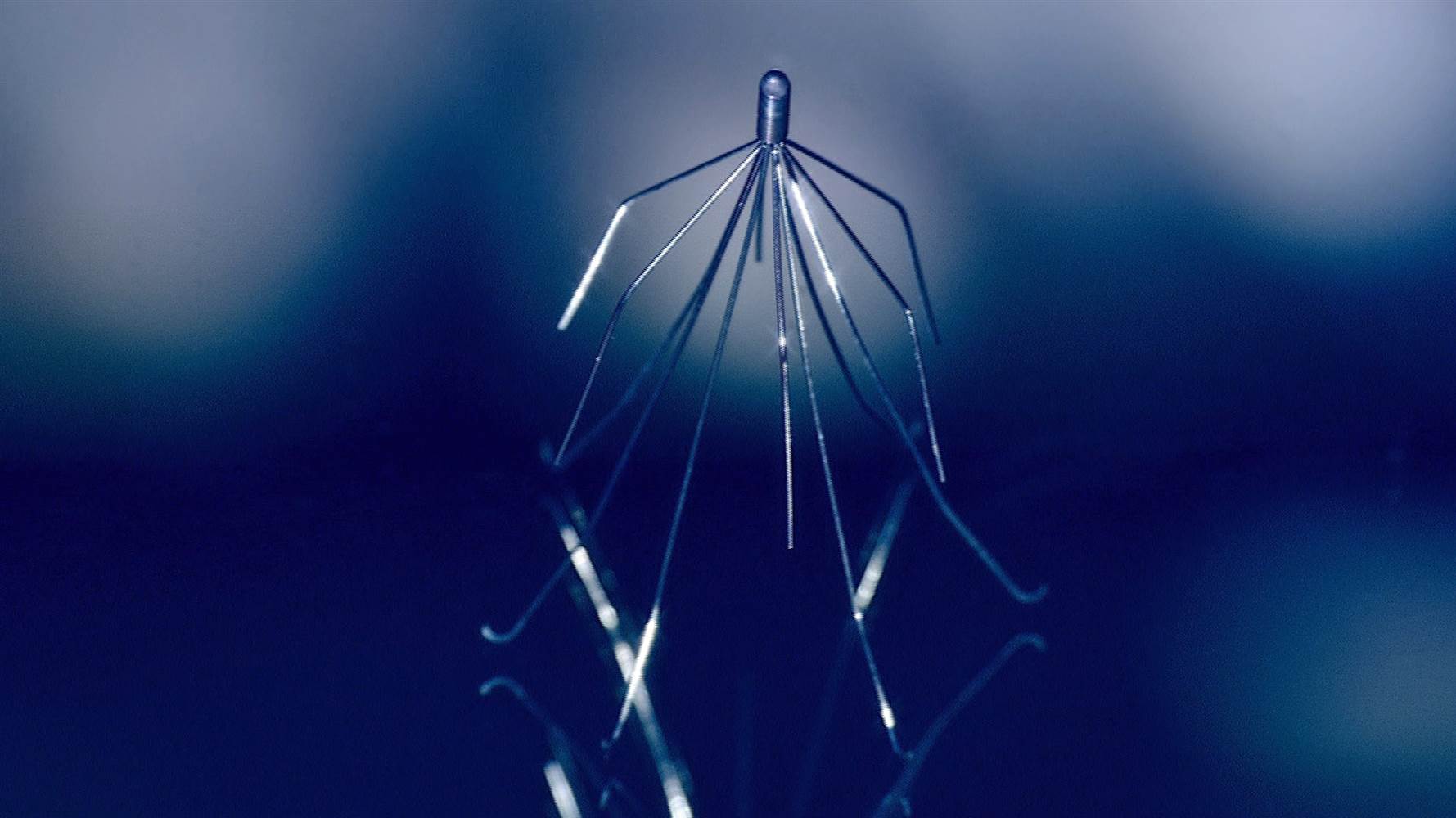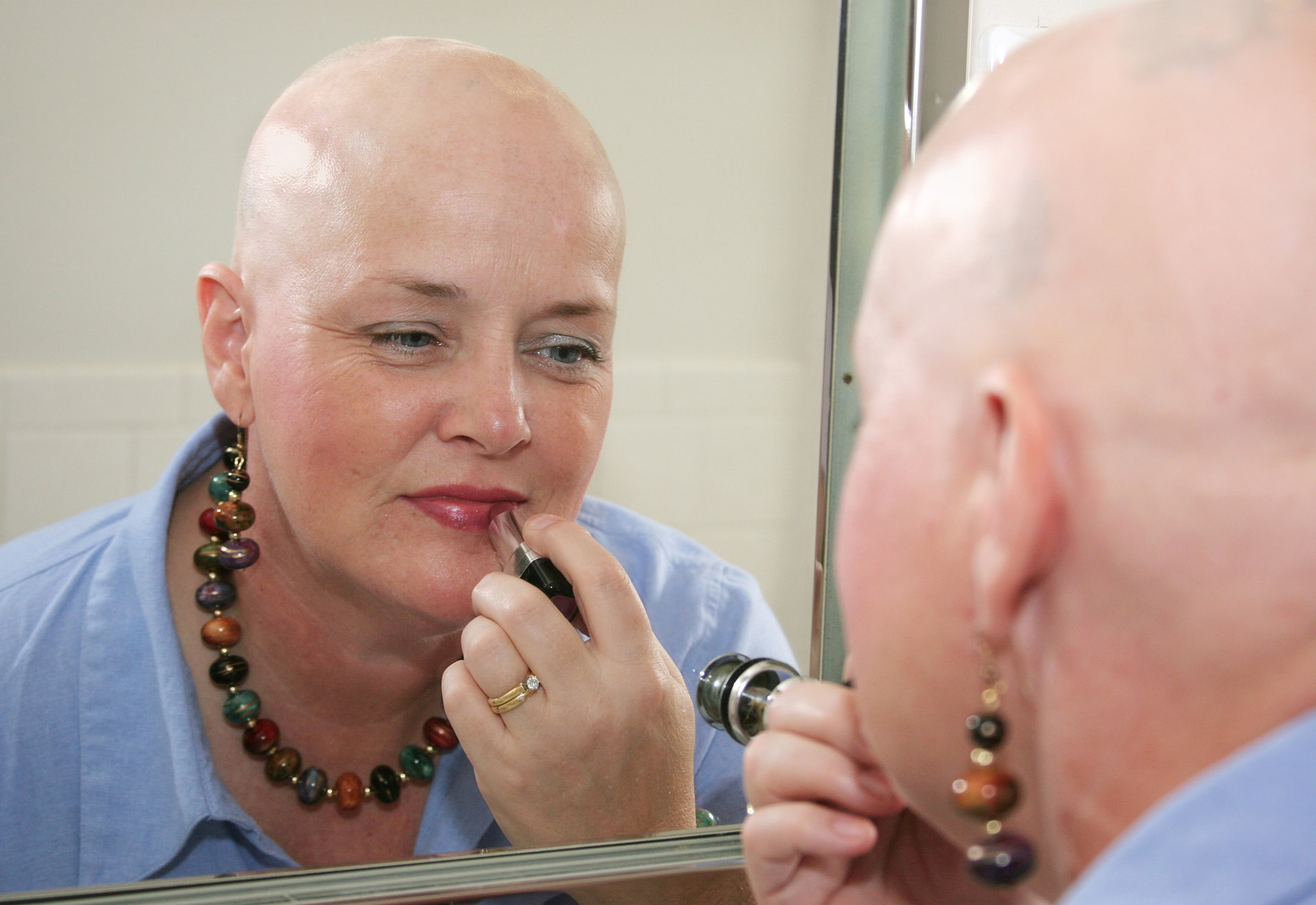
Years of product complications and mounting litigation have left an unflattering brand on IVC filters. Patients continue to experience problems with the troublesome medical devices.
Part of what our national litigation team at Hotze Runkle PLLC has learned in dealing with the patients affected by IVC filters is that there is often as much trouble with removing these products as there is living with them.
The reasons to consider removal are often the same ones that make extracting an IVC filter so difficult. Whether the filter has torn or blocked a vein, or pieces of the metallic devices have traveled elsewhere, safely removing an IVC filter can be a dangerous undertaking.
Luckily, recent breakthroughs in IVC filter removal look promising for patients living with the pains and medical concerns caused by the devices.
Cutting-Edge Innovations
The fact that these filters break down and inevitably require removal should not be all that surprising. Filters of all sorts need to be replaced in order to prevent potential issues.
What is alarming is that follow-ups to determine the status of IVC filters are not always done, even with the knowledge that most complications arise within three to six months.
[bctt tweet=”#IVC filter complications can begin in as little as 3 to 6 months #Fact” username=””]
This urgent need is what motivated a team of interventional radiologists at Rush University Medical Center to develop a safe and effective method of removing the filters.
The Journal of Vascular and Interventional Radiology published the latest techniques developed by the team in November of last year.
Lead author Osman Ahmed, MD, reflected the confidence of the interventional radiologists involved when he stated that they were able to remove any filter with this new method, regardless of the situation.
This innovative system for IVC filter removal centers around catching – or “snaring” – the device during a procedure to ensure that it doesn’t move. This minimizes the chance that additional damage is done to the vein.
Once this is done, the doctors cover the device so that no pieces break off and travel elsewhere in a patient’s body.
An excimer laser is one of the tools utilized by the team to make this technique possible. These lasers are commonly used in the production of microelectronics and eye surgery.
The confidence put forth by Ahmed is well-founded as the Rush staff has successfully retrieved 100 percent of IVC filters with their methods over the last five years.
[bctt tweet=”#RushUMC has 100% #IVCfilter removal rate with new method over last 5 yrs” username=””]
Making a Difference Where It Really Matters
While skeptics may be quick to wonder if these are primarily standard procedures, this is not the case.
Many of these procedures were performed on referred patients that required the team to deal with filters that other hospitals had deemed too difficult to remove.
Twilight (conscious) sedation is typically used for these minimally invasive outpatient procedures. If the Rush staff feel that a retrieval may take longer, a patient is given general anesthesia.
The incision made for removing an IVC filter is made either in the neck or the groin. The team uses X-rays to guide the tools they use, such as wires and catheters, to remove a filter.
The necessity to remove IVC filters is because of the inherent dangers associated with leaving the devices inside a patient’s body for too long. The FDA recommends that everyone who has an IVC filter should consult with an interventional radiologist about removing the filter. Regardless of whether removal is recommended, all patients should be evaluated.
[bctt tweet=” #FDA says the length of time left implanted may increase IVC filter complication risks #HotzeRunkle” username=””]
If you or someone you know has been harmed by complications with an IVC filter, contact the national litigation team of Hotze Runkle PLLC today at 877-919-0830.
Our experienced legal team can help you determine if you are entitled to compensation for the suffering you have experienced.
Don’t let your voice be taken away. We will take care of you and your family by holding those who failed to, accountable.

The majority of makers and distributors of IVC filters across the country find themselves entangled in litigation.
These widely-used devices, which are typically used to treat and prevent deep vein thrombosis (DVT) and pulmonary embolisms, have a long-standing reputation for being dangerous and harmful to patients who have had them implanted.
Strangely, these companies have still persist in marketing and selling their products. Even in the face of countless reports of injuries, complications – and even death.
Hotze Runkle PLLC knows that these companies have to be held accountable for the suffering they have caused. Their disregard for the wellbeing of patients is both inhumane and criminal.
People should know that even though IVC filters are a common choice to combat DVT and pulmonary embolisms, there are other treatment options available to them.
Potential Alternatives to IVC Filters
Anticoagulants
This is the alternative choice that is most commonly used instead of an IVC Filter. Anticoagulants, or blood thinners, can be given to post-surgery patients to help minimize the risk of strokes and blood clots.
A typical blood thinner therapy plan begins with a patient being given heparin for several days. This will be accompanied by the start of a warfarin treatment that can last anywhere between three to six months.
The reason that these plans begin with heparin is that warfarin usually needs a number of days to reach its peak effectiveness. Heparin helps bridge that initial time gap between surgery and when warfarin reaches its full potency.
However, this alternative is not without drawbacks of its own. People who have medical issues that make them more likely to have severe bleeding incidents can’t take anticoagulants.
Patients with kidney problems and clotting disorders are among those who have https://www.doctorsexpresswaltham.com/buy-diflucan/ to seek out additional treatment avenues as well.
Additionally, if the threat of DVT or pulmonary embolisms is a recurring issue, there is no definite timetable for how long a patient would have to use blood thinners.
Over time, these medications can cause scarring in a patient’s veins and potentially increase the risk of blood clots.
Intermittent Pneumatic Compression (IPC)
If circumstances and medical status prevent the use of blood thinners, a person might consider IPC treatment. In spite of the complex name, this is a relatively simple treatment method.
A patient will have an inflatable sleeve placed over the part of the body where there is risk of blood clots – often times the leg – but not always. That sleeve is connected to an air pump.
The air inflates the sleeve which in turn pushes the blood away from the trouble area to the patient’s heart. When the sleeve deflates, it allows for blood to return to where it started.
The continual process helps facilitate regular blood circulation, minimizing the likelihood of a clot forming.
Thrombolysis & Surgery
These two choices are not used as frequently but should be weighed if a patient is not a candidate for or comfortable with other treatment options.
Thrombolysis is a procedure that involves the use of a catheter to quickly break up a clot and return a vein’s blood flow to normal. There is a relatively high success rate (80%) associated with this type of treatment.
Occasionally, surgery can be employed as a solution to a blood clot. This is only done in very rare and unusual cases involving clots that are very large and blocking important blood vessels.
If you or someone you know has suffered from an implanted IVC filter, Hotze Runkle PLLC wants you to know what your legal options are.
As with all medical decisions, Hotze Runkle PLLC encourages you to speak with your physician when deciding on how to face issues with DVT or pulmonary embolisms. It is vital that you consider all the alternatives to IVC filters.
Our experienced team of attorneys can help you in your fight against the companies who made your well-being secondary to their bottom line. Contact our national litigation firm today at (877) 919-0830 and let us take care of you and your family.
Disclaimer: THIS SITE DOES NOT PROVIDE MEDICAL ADVICE. The information presented in this blog and on this site should not be interpreted as a substitute for qualified professional medical advice.

While we can sympathize and empathize with the victims who have suffered adverse effects because of the use of IVC filters, the negligent companies behind them seem faceless and nameless.
The national litigation team at Hotze Runkle PLLC understands the importance of getting to know the people we are fighting for on a personal level. We also believe it is equally important for us to know about the reckless companies who have put these innocent people in harm’s way by disregarding data that showed their products were dangerous.
By the Names and Numbers
In deciding whether or not to pursue legal action for an injustice suffered, it is natural to ask if there is any precedent or history of similar cases.
For patients who have had trouble with IVC filters, there is an ever-growing body of cases to draw on. There are almost 4000 filed lawsuits currently pending in two separate federal litigations against the two largest makers of these devices.
[bctt tweet=”Nearly 4000 lawsuits against 2 largest IVC makers #HotzeRunkle #NationalLitigation #Fighting4You” username=””]
However, these two makers – Cook Medical and C.R. Bard – are not alone in facing potential legal consequences.
Cordis Corporation, a smaller company that also produces the filters, is also involved in around 200 cases of their own. Rex Medical, B. Braun, and Argon Medical are additional companies that distribute IVC filters who are facing lawsuits in federal and state court over the side effects associated with their products.
Still, none of the companies face more penalties and consequences than Cook Medical. The Gunther Tulip and Celect IVC models they market are at the heart of many of the claims levied against them.
The U.S. District Court, Southern District of Indiana, is currently handling all the pretrial steps for the multidistrict litigation on these cases.
C.R. Bard has a number of its models that have had injury claims directed against them. The hundreds of lawsuits focus on issues that have arisen with their Denali, Recovery, G2, and Meridian models.
The OptEase and TrapEase filters are the products that have brought suits against Cordis Corporation.
The Role of the FDA
Compounding the indifference from the distributors of IVC filters was the slow response from the FDA. Even after having received reports, in the thousands, for years concerning the negative and deadly effects of the filters, they didn’t issue a warning against them until 2010.
A subsequent warning from the FDA in 2014 advised the removal of IVC filters after a month or two followed their initial warning.
A year later, NBC followed up with a report of their own claiming that C.R. Bard had disregarded these warnings and continued to sell their products, in spite of the injuries and death associated with them.
The events covered in the report highlighted many of the common issues faced by patients who had, for various medical reasons, the devices implanted. These risks included the IVC filters puncturing the vena cava and breaking apart and moving out of place.
In some cases, the metal pieces that broke off traveled to other parts of the body, like the heart and lungs.
C.R. Bard failed to respond to these issues and also failed to pass the warnings along to doctors.
Hotze Runkle PLLC’s national litigation firm is here to provide you with the legal guidance you need and to fight for the justice you deserve.
Regardless of whether or not the IVC filter model that you have had implanted appears above, there is a high risk of harm that comes with any version of them.
We here at Hotze Runkle PLLC advise you to speak with your doctor or qualified physician on the potential risks you could face while using an IVC filter if you haven’t already struggled with their dangerous failures.
If you or someone you know has been injured because of their use of an IVC filter, contact Hotze Runkle PLLC today at (877) 919-0830.
Don’t suffer quietly or alone. These companies must be held responsible for the pain they have caused innocent victims.

There has been increased momentum in the Taxotere lawsuits that are currently undergoing discovery and various pretrial steps in the U.S. District Court, Eastern District of Louisiana.
Altogether, there are now over 1,100 suits filed by breast cancer patients who have experienced permanent alopecia (hair loss) as a result of taking the chemotherapy drug Taxotere.
[bctt tweet=”Over 1000 lawsuits filed against chemotherapy drug #Taxotere have been filed #HotzeRunkle #LawTeam” username=””]
One factor that has contributed to this high number of cases is that lawsuits involving both Taxotere (docetaxel) and its generic versions are included in the consolidated litigation.
Hotze Runkle PLLC recognizes the importance of the path these proceedings will take. It is vital to future cases and to the lives of affected patients that the manufacturer of Taxotere, Sanofi-Aventis, be required to answer for the suffering they have caused.
Looking Back as Things Move Forward
There is a monthly status conference scheduled for July 7th, which should provide more concrete dates for the trials moving forward.
Perhaps the most promising news that has come out of pretrial developments is that a request by Sanofi-Aventis lawyers to have the suits litigated on an individual basis was not approved.
The request came in spite of years of data showing a repeated pattern of Sanofi-Aventis ignoring the potential of long-term hair loss in patients treated with Taxotere.
In 2012, in the Annals of Oncology, a study was done on 20 patients who were treated with Taxotere during their therapy. Every patient in the study experienced a lasting alopecia.
While that may be an extreme example, a study conducted by Sanofi itself showed the same risks for Taxotere users as far back as the late 1990s.
This study, known as GEICAM 9805, yielded results that showed nine percent of patients who were given Taxotere were afflicted with hair loss that lasted ten years or more.
Those chronic side effects were still not enough for Sanofi-Aventis to provide more than a vague warning concerning hair loss on Taxotere packaging.
In some cases, the alopecia experienced by patients in this study was not restricted to just the scalp. The loss of eyebrows was another long-term consequence for at least one woman in Canada.
[bctt tweet=”#Alopecia (hair loss) can affect more than just the #scalp. #HotzeRunkle #Facts” username=””]
One case that comes up most often is the lawsuit filed by Ami Dodson.
A former breast cancer patient from California who used the drug during her chemotherapy treatment has made a number of allegations against the defendants, concerning events that go as far back as 1996 – over 20 years ago.
The fact that the timeline of her claims stretches back to this year is no accident. It was in 1996 that docetaxel was first approved by the FDA for use in breast cancer therapy.
Dodson was one of the earliest to voice opposition to Sanofi’s marketing of Taxotere as more effective and less toxic in comparison to other chemotherapy drugs. Her suit is something of a template case illustrating how the potential side effects of Taxotere have resulted in lasting, chronic hair loss.
Mrs. Dodson’s case, as well as all those currently pending in Louisiana, should serve as a reminder to all those affected by Taxotere that they don’t have to remain silent.
The national litigation team of Hotze Runkle PLLC is here to help you figure out the legal rights and options that you have.
You can fight back against the negligence and indifference of Sanofi-Aventis and get justice for your troubles.
The time to act is now. Contact our national litigation team today at 512-476-7771 and let us go to work for you. We want to bring you the peace of mind you need to move forward in life.

The U.S. Food and Drug Administration (FDA) has received more than 1,000 adverse event reports involving Inferior Vena Cava (IVC) filters and a growing number of lawsuits are being filed against IVC manufacturers BARD and Cook Medical for several of their products including Bard Recovery, Bard G2, Bard G2 Express, Cook Gunther Tulip, and Cook Celect.
Allegations against the developers of these IVC filters revolve around the medical devices falling out of place or breaking apart within the body, and the fragments migrating, causing severe internal damages to vein walls and internal organs such as the heart and lungs. Lawsuits also note that the manufacturers failed to warn patients and physicians about the potential hazards of IVC filters.
These issues have been linked to retrievable IVC filters and their surgical removal has been a topic surrounded by much controversy. In 2014, the FDA released a safety communication notifying doctors to remove retrievable IVC filters within two months after a patient was no longer at risk of pulmonary embolism; a medical condition the devices are designed to protect against.
Now, a new study published in Circulation: Cardiovascular Interventions found that it becomes harder to remove the IVC filters the longer they are left implanted, with this further resulting in health problems and the need for more invasive retrieval techniques.
What we already knew about IVC filters.
This isn’t the first time the failing of IVC filters and their removal – or lack thereof – have been scrutinized by reputable organizations. A study published in 2010 in the Archives of Internal Medicine found that the Bard Recovery Filter had a failure rate set at 25% and the Bard G2 at about 12%.
Additionally, JAMA Internal Medicine published in July 2015, a study conducted at a single medical center which revealed that out of 648 procedures, 14.7% required advanced techniques to retrieve the devices after routine attempts had failed.
These studies have only validated concerns set forth by plaintiffs and those injured by the harmful devices.
What the new study warns against.
The newest study published in Circulation: Cardiovascular Interventions was completed by a group of researchers from Northwestern University Feinberg School of Medicine. The group analyzed data from IVC filter retrieval procedures that took place between 2009 to 2015.
One of the most notable points of the research was that out of 762 procedures, the most common filter retrieved was of the Cook Celect variety.
The researchers also uncovered an alarmingly high retrieval failure rate of nearly 41% when the devices had been left in patients for over seven months. The failure to properly retrieve the IVC filters also led to an increased risk of other injuries such as groin hematoma or harming of the inferior vena cava itself.
It was understood that the longer the medical device had been left implanted within the patient, the more difficult the retrieval process, which would ultimately require patients to obtain services at a more advanced facility.
What are some of the risk of retrieving IVC filters?
While having the medical devices implanted within the body is risky enough, the removal of IVC filters come with their own potential concerns including:
- Damage to the vena cava
- Damage to internal organs
- Migration of IVC filter pieces to the heart or lungs
- Loss of the filter in the body
- Source of a new clot
In scenarios where patients cannot have their IVC filter removed because of its dangerous proximity to organs or arteries, they must commence a blood thinning treatment – the same type of treatment the IVC filters were meant to help them avoid.
Let the national litigation team of Hotze Runkle PLLC help you take legal action against the manufacturers of defective IVC filters.
If you or a loved one has suffered physical, emotional, and financial complications due to an IVC filter, Hotze Runkle PLLC is here to help. Contact us today at (877) 919-0830.
Our team of experienced and knowledgeable attorneys is dedicated to fighting for the justice you deserve. Allow us to review your experiences and determine if your case qualifies for compensation.

There are side effects that breast cancer patients can expect when undergoing chemotherapy, with hair loss being among the most common.
One thing that eases the strain of these treatments and their byproducts is the knowledge that the effects are temporary and that patients can expect a return to normalcy after completing them.
Unfortunately, for many breast cancer patients who were treated with the chemotherapy drug Taxotere, the hard times have continued. Many patients have completed treatment only to find that they have suffered from permanent hair loss, or also known as alopecia.
Lawsuits have begun to emerge, revealing that the manufacturer of this drug did not sufficiently warn patients or doctors about the risk of this side effect.
At Hotze Runkle PLLC, we understand that dealing with any type of cancer treatment is difficult enough and no one should have to face continued suffering after the treatment has been completed. Taxotere creator Sanofi-Aventis needs to be held accountable for their negligence.
Our team of experienced attorneys at Hotze Runkle PLLC want to provide you valuable information so that you can be better informed about the current situation should you find yourself affected by the drug.
Taxotere Allegations In-Depth
There are now more than 1,000 lawsuits undergoing pretrial coordination in the Eastern District of Louisiana centered around allegations that Taxotere caused autoimmune skin disease alopecia in breast cancer patients.
Plaintiffs charge that the drug, which was approved by the FDA in 1996, comes with a higher risk of permanent alopecia when compared to other equally effective chemotherapy drugs. One main point of contention for plaintiffs is that this information was not included on labeling for Taxotere until 2015.
This becomes even more damning for the defendants, Sanofi-Aventis, because regulators and patients in Europe were made aware of this potential side effect a decade earlier, in 2005.
Furthermore, Canadian labels were changed in 2012 to inform patients and other parties there.
It was only in the U.S. that Taxotere came with a vague note that “hair usually grows back” concerning any possible permanent hair loss.
Orders Addressing Discovery and Bellwether Trials
On May 15, a pretrial order instructed both plaintiffs and defendant to propose an order for a discovery schedule as well as dates for bellwether trials by May 26th.
Bellwether trials are a common feature of situations like this where so many lawsuits are directed against a single defendant. The trials will usually involve lawsuits that are representative of the majority of the other cases.
This is done to help all parties involved see whether there is strength behind a plaintiff’s claims. The results can be a good predictor of how future, related trials might be decided by juries.
A May 18th Case Management Order set a number of important deadlines concerning Personal Jurisdiction Discovery:
- By May 26, plaintiffs had to serve personal jurisdictional discovery in response to Sanofi’s motion to dismiss.
- Before June 2, 2017, the two sides would meet again and discuss any discovery that had been served.
- As of June 30, 2017, the defendants would respond and cite objections to discovery.
Another Case Management Order, on the 23rd of May, also addressed discovery. This order stated that any foreign merits discovery related to French Sanofi entities would also be served on the 26th of the month.
The deadlines currently set concerning discovery make it likely that the whole process will last until the early stages of Autumn. In this scenario, the first bellwether trials would likely begin in either November or December of this year.
It is important that everyone who has been affected by Taxotere, whether involved in a similar lawsuit or not, follow the developments around these cases.
Hotze Runkle PLLC is the support you need if you have been harmed as a result of taking Taxotere.
If you have been affected by Taxotere and are unsure about what your legal options are, contact Hotze Runkle PLLC today at (877) 919-0830. Our national litigation team can provide you with the guidance you need to sort through these difficult times.
Don’t face the shadow of Taxotere alone. Our attorneys have the experience you can trust to get the justice and compensation you deserve.

If you or a loved has fallen victim to severe injuries caused by dangerous drugs or medical devices like Xarelto, IVC Filters, or Taxotere then you may be aware that there are thousands of lawsuits all across the nation involving the manufacturers who have developed and marketed these products.There are some vital differences to note, however, between a traditional lawsuit and what is known as multidistrict litigation (MDL) case.
Hotze Runkle PLLC is a national litigation law firm dedicated to providing top tier legal advice and assistance to individuals and families during the most troubling times. We believe that by making the most out of informing our clients, we are better able to develop a trusting environment and clear lines of communication.
We would like to educate the reader on how MDL may affect you.
What is multidistrict litigation?
Multidistrict litigation (MDL) is a special civil procedure that occurs when a complex legal issue begins to affect a large quantity of people. In the cases of Xarelto, IVC filters, and Taxotere, for instance, thousands of claims have been made against the creators of these individual products.
Generally, cases that fall under MDL have a common issue and common parties.
In order to better manage the multitude of cases that occur all around the country, the federal court system will transfer all of them into a single district court. One court will manage all the discovery and pretrial processes for the lawsuits.
The first lawsuits of an MDL are known as bellwether cases and their rulings can greatly affect litigation for the remaining cases. These initial cases are specifically chosen to represent the circumstances of the majority of the other cases.
What is the purpose of multidistrict litigation?
There are a couple of reasons that the MDL system was established.
The intent of merging all of these cases into a single district court is to conserve court resources, allow litigation to be more efficient and also move forward more quickly. Additionally, this also saves time, money, and effort for the plaintiff (as well as the defendants).
As previously mentioned, a single court will go through the discovery process, which is the investigation that both parties conduct prior to going to trial. The court will set guidelines and rules that must be followed during the discovery process but which will allow for the parties to carry out depositions of witnesses, gather official documents, and submit interrogatories.
Another important element of the MDL is that it helps develop a consistency in rulings. If a single plaintiff is facing individual lawsuits all throughout the nation, then there is a high likelihood that a variety of different rulings will occur, which can negatively affect plaintiffs in the long run.
What companies are facing MDL for IVC filters?
There are two major IVC filter producing companies that are currently facing MDL because of filters that were defective and caused serious – and sometimes deadly – injury to patients.
One of those companies is Cook Medical, which has nearly 1,600 claims filed against it in the Indiana federal court. The lawsuits allege that the Cook Celect IVC Filter was sold to patients even as its potential to break apart and damage internal organs and veins was known by the company. While a number of these cases have been recommended for settlement, if the settlements do not occur, the bellwether cases will begin later this year.
Another IVC filter manufacturer facing litigation is Bard for a number of its products including the G2 IVC filter, Recovery IVC filter, Denali, Eclipse, and several others. Individuals who have had these medical devices installed have dealt with heart or lung perforation, internal bleeding, hemorrhaging, punctured vena cava veins, chest pains, shortness of breath, and other serious medical issues.
The presiding judge is looking to narrow down the bellwether trials to about six cases and hopes to begin litigation in late 2017.
Let the experienced national litigation team of Hotze Runkle PLLC help you take action if you or loved one has been injured by an IVC filter.
Hotze Runkle PLLC law firm is committed to helping those have been harmed by others find the justice they deserve. Don’t hesitate to reach out to us immediately.
If you or a loved one has suffered physical, emotional, and financial complications due to the implantation or retrieval of an IVC Filter, we are here are to help. Contact us today at (877) 919-0830.
We can help you recover damages to cover medical expenses, lost earnings, earning capacity, physical and emotional pain, and more.

Breast cancer patients have enough to consider when finishing up treatment and preparing to get back to their lives. The serious side effects of Taxotere, manufactured and marketed by Sanofi-Aventis, can make that much more difficult than it has to be.Sanofi-Aventis is facing the consequences, in the form of lawsuits, from breast cancer patients who used Taxotere and suffered alopecia – or permanent hair loss – as a result of the drug.
Plaintiffs contend that there was sufficient information for the company to provide a warning to all patients in the United States, yet failed to do so. Even more strikingly as similar warnings were issued to patients in other countries who were under treatment of the same drug.
Hotze Runkle PLLC is prepared to work for you and your family if you have suffered the debilitating side effects of Taxotere. We want to make sure that you receive the compensation you deserve for the physical and psychological damage you have gone through.
We also believe it is vital that patients be aware of Taxotere versus other options.
Taxol (Paclitaxel)
One French oncologist, Hugues Bourgeois, regularly recommends using Taxol as an alternative to Taxotere, as it is less likely to cause alopecia.
Dr. Bourgeois reported that there is a “negligible percentage” of severe alopecia cases associated with Taxol, making the frequency much lower than in patients who use Taxotere.
Like Taxotere, Taxol is a member of the taxane family of medicines. It is designed to stop cancer cells from repairing themselves and inhibit the growth of new ones. Both drugs operate the same way and there is no drop-off in quality when choosing Taxol.
In fact, there is plenty of evidence that suggests Taxol treats breast cancer more effectively and with fewer side effects.
In fact, the main difference exists in the manner in which Taxotere has been marketed. Taxotere only requires chemotherapy sessions to occur once every three weeks while Taxol requires a weekly dosage.
The dosing schedule is a major reason why Taxotere has been more frequently prescribed by physicians, despite the fact that serious side effects continue to be associated with its use.
Abraxane
The main ingredients in Taxol are dissolved by a solvent called Cremophor EL, allowing them to enter the bloodstream more effectively. The presence of Cremophor EL can make Taxol tougher to use for some patients. The possibility of a reaction is typically offset by additional medication taken before someone uses Taxol.
Abraxane avoids this issue by not employing a solvent. Instead, the drug’s main components are wrapped in albumin, which is the main protein found in someone’s plasma.
This makes it far less likely that a patient will have trouble tolerating Abraxane whenever they are given a dose. The need for additional medicine beforehand is also eliminated, which helps to limit potential side effects.
Like Taxol, there is a body of research that suggests that Abraxane is both safer and more effective in treating breast cancer, including avoiding the permanent hair loss associated with Taxotere.
Regardless of where you find yourself in your battle against cancer, you should know that you have options and your fate is not out of your hands.
You don’t have to quietly accept your situation if you have been left with permanent loss from using Taxotere. Hotze Runkle PLLC is here to make sure that the negligence and indifference on the part of Sanofi-Aventis does not go unpunished.
Taxotere has a history of leaving breast cancer patients struggling with permanent cases of hair loss, and yet the drug still continues to be heavily recommended and used. There are other medicines, including Taxol and Abraxane, that offer effective treatment and are safer for you.
You don’t have to face the challenges of piecing your life back together alone. The experienced national litigation team of Hotze Runkle PLLC is more than capable of fighting for your rights and your justice.
Contact us today at (877) 919-0830 to find out how we can provide the legal support you need to start the healing process.
 A woman bald from a health problem putting on makeup in the mirror.
A woman bald from a health problem putting on makeup in the mirror.
Although this treatment has presented itself as a superior option to other chemotherapy drugs such as Taxol, which offers similar results without a greatly increased risk of permanent hair loss, patients are having to deal with the consequences of going through Taxotere treatment without full awareness of its side effects.
Your national litigation firm, Hotze Runkle PLLC, wants to ensure that you are protected from the immoral and illegal actions of major pharmaceutical companies, like Taxotere maker Sanofi-Aventis, who try to take advantage of innocent people.
A Brief History of Taxotere
Developed and marketed by the French pharmaceutical company Sanofi-Aventis, Taxotere was first approved by the U.S. Food and Drug Administration (FDA) in 1996. While the drug has been prescribed for a number of cancers including non-small cell lung cancer, advanced stomach cancer, head and neck cancer, and metastatic prostate cancer, it has primarily been used as a treatment plan for breast cancer.
According to BreastCancer.Org, as of 2017, there were more than 3.1 million women with a history of breast cancer in the United States. The vast majority of these women, estimated at around 75%, were prescribed Taxotere as a part of their treatment plan.
Because the treatment plan for Taxotere calls for chemotherapy sessions only once every three weeks, in comparison to other drugs that require treatment sessions weekly, the drug was marketed as more effective and less time consuming – an attractive option to patients.
Taxotere has made manufacturer Sanofi-Aventis billions of dollars in profit.
Litigation Issues Against Taxotere
Lawsuits have emerged against Sanofi-Aventis accusing the pharmaceutical company of deliberately failing to disclose the risk of permanent hair loss in order to increase sales.
Various studies, some sponsored by Sanofi itself and others conducted by third party institutions, revealed that a higher percentage of women were likely to suffer permanent hair loss (alopecia) in comparison to other chemotherapy drugs such as Taxol.
This means that the company was fully aware of the life damaging risk of its drug, yet purposely avoided disclosing the dangers to patients.
Other claims against Sanofi include:
- Selling the drug without proper testing.
- Failing to warn healthcare providers.
- Misleading patients through advertisements.
- Falsely assuring patients of returning hair growth.
- Failing to provide adequate warnings on packaging.
Many of these allegations are specific to patients in the United States, as the drug was marketed in other countries with warnings about the potential for permanent hair loss. It was not until 2015 that FDA finally issued a warning in the United States about the potential risks associated with the drug. Prior to the FDA warning, Sanofi suggested that patient’s hair would regrow after treatment.
Additionally, studies suggest that Taxotere is less effective than another chemotherapy drug – Taxol. Evidence found shows that over 89% of women who received Taxol had a higher survival rate than those undergoing treatment with Taxotere.
Additional Chemotherapy and Alopecia Side Effects
Because of the strength of chemotherapy drugs within the human body, many adverse side effects are known to occur in certain patients including:
- Loss of appetite
- Nausea and vomiting
- Fatigue and drowsiness
- Pain at injection site
- Hair loss
- Diarrhea
- Infection
- Anemia
- Mouth or throat sores
- Numbness in fingers and toes
While hair loss does commonly occur with chemotherapy treatment, there are a number of symptoms that you should be aware of that may suggest you are being affected by alopecia:
- Loss of hair on entire body
- Loss of eyebrow and eyelash hair
- Baldness
Unnecessary Suffering
As if having to deal with breast cancer isn’t painful enough, Sanofi-Aventis has subjected women to an on-going, life-changing battle.
The impact of hair loss can greatly affect the quality of life, body image, social functioning, and self-esteem of women who have undergone chemotherapy. Even more so, these unfortunate women must also suffer the loss of or inability to work, which can have dire economic effects in their lives.
If you or a loved one has suffered through the painful and serious side effects of Taxotere, do not hesitate to contact the law offices of Hotze Runkle PLLC today at (877) 919-0830.
Our reliable national litigation team at Hotze Runkle PLLC are here to guide and support the women and cancer patient survivors who have been injured by Taxotere.
Your situation may mean you are entitled to compensation for your pain and suffering.

We as a nation, we have become familiar with news stories and exposés on dangerous medical devices and prescription drugs. Every years hundreds, if not thousands, of individuals suffer through life threatening situations because of products that have been marketed to consumers as safe and effective to treat their illness or health condition. From medical devices like IVC filters, to prescription anticoagulants like Xarelto, patients are often the last to learn that their treatments may be dangerous, or sadly, even fatal. While there are certain federal departments designed to regulate the approval of medications and medical devices that make it into the market, flaws within these systems allow for pharmaceutical companies and manufacturers to sell products that are not always thoroughly studied or understood.
At the law offices of Hotze and Runkle, we believe that the safety and physical well being of patients should be of the utmost importance to these various medical devices and drug creators. However, the reality is that the primary focus of many of these pharmaceutical companies is simply profit.
To understand how these dangerous medical devices and prescription drugs make it through governmental approval processes, there is some vital information that you should know.
The Gatekeepers: The Food and Drug Administration
The Food and Drug Administration (FDA) is the federal department tasked with regulating the approval of medications and medical devices that the public is able to purchase, including prescription and https://www.doctorsexpresswaltham.com/propecia-order/ over-the-counter products.
Unfortunately, the FDA does not actually test the products, but rather analyzes clinical trials and data to make a decision on whether or not a product will be approved. This system is rather flawed and allows for many drugs and devices to make it to the market without undergoing adequate studies or trials.
To begin with, medications and medical devices are generally tested by the same companies that make them. This means that the FDA must rely on the accuracy and integrity of studies done by the same individuals who are seeking to make a profit off of the devices and drugs. As pharmaceutical companies cannot make a profit from products that do not have approval, it is in their self-interest to only report information that is suited to their own needs. Essentially, pharmaceutical companies will only report the data that will grant them FDA approval.
To make matters worse, the Government Accountability Office (GAO) has warned that the FDA lacks reliable resources to adequately staff, study, and track drugs and devices before they reach the market. This is further exasperated by the FDA’s impaired oversight of postmarket medications and medical devices.
More Than Just an FDA Problem
To make matters worse, there is an unsettling trend amongst federal legislatures that is providing the FDA with even less oversight abilities and further enabling pharmaceutical companies to release products that are not adequately studied.
One of the most recent examples of this has come in the form legislation known as the 21st Century Cures Act.
One of the last pieces of law signed by Obama, the Cures Act outwardly appears to be a landmark bill that would fund a number of health initiatives. The downside, however, is that the bill also cuts into the powers of the FDA, further deregulating the pharmaceutical and medical device industry.
One of the means by which this will occur is by allowing the FDA to quickly approve new technologies and drugs with even lower standards of evidence than what is currently set in place. While the FDA currently relies on clinical tests and randomized samples to ensure the safety and effectiveness of new products, the Cures Act would now allow them to approve an item based on observations, safety and side-effect claims, and post market clinical studies, rather than pre-market analysis and thorough consideration.
Proponents of the bill argued that the FDA system was ineffective and did not allow for growing medical technologies and medications to emerge on the market quickly enough. Now, the companies can bypass the entire process and submit documentation after patients have been subjected to the medication or medical device. These post market clinical studies often take place years after approval and few are ever completed.
Additionally, the 21st Century Cures Act would require the FDA to utilize a third party to review the safety of a product if a manufacturer makes changes to it. This would allow manufacturers to select and pay the third party for approval. This could obviously lead to huge conflicts of interests.
Don’t let the negligent and deceitful practices of IVC filter manufacturers scare you. Your injury and pain deserve justice. Let the legal representatives of Hotze Runkle PLLC serve your needs and provide you with the commitment of a team that can get the job done.
If you or a loved one has suffered adverse effects as a result of an IVC filter implantation, contact a team that fights to earn your trust—contact Hotze Runkle PLLC.
Our team of experienced and high qualified lawyers has the ability to make IVC filter manufacturers pay for the damaged they have caused. Reach us today at (877) 919-0830 to learn more about how we can put our years of experience to work fighting for you and your family.
